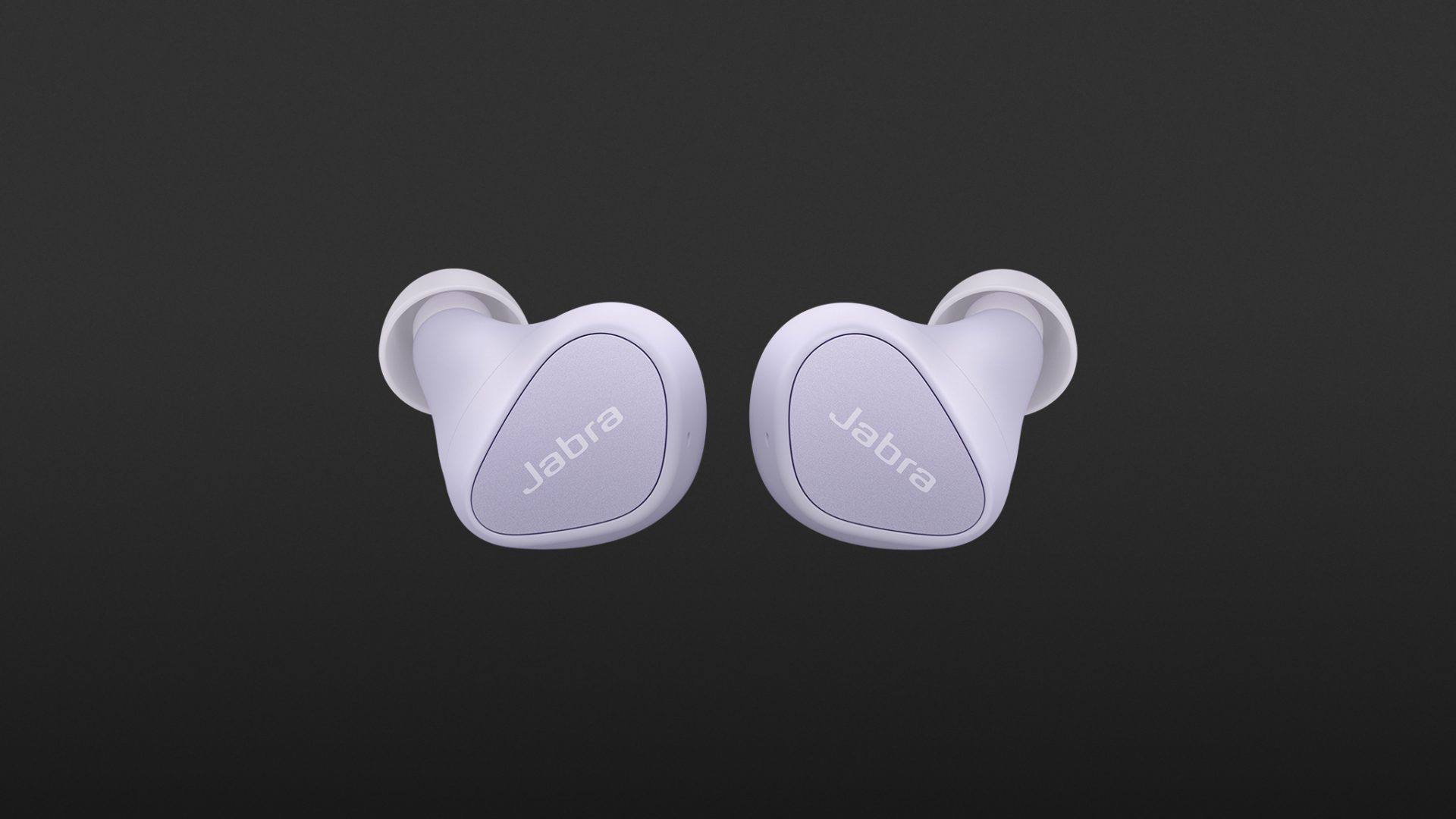Jabra have succeeded with their task: For just under 80 euros, the Elite 3 offers good sound, useful everyday features such as transparency and mono mode, as well as direct access to Spotify and Alexa. Of course, it is a pity that the AAC codec has been omitted, and iOS users have to make do with SBC. We would also have liked a customisable equaliser so we could adjust the sound even better to our own preferences. But for many, this might not be necessary – the Jabra Elite 3 already sound good straight out of the box. We, therefore, recommend them as “value for money”!
With the Elite 3, Jabra want to expand their target market: these new in-ears are the manufacturer’s most affordable True Wireless headphones to date and, at a reasonable 79 euros, they are aimed at an audience for whom noise-cancelling or wearer recognition is less important than modern sound tuning. Do they succeed in their task?
If you think that these are just simple True Wireless in-ears, then you are mistaken. Because, despite the reduced feature sets and price, the Elite 3 support not only SBC but also Qualcomm’s aptX codec – although AAC is not included. The new system includes a transparency mode, app support, Amazon Alexa support and Google Fast Pair.
Features
Available in four colours, Light Beige, Dark Grey, Purple, and Navy, the Elite 3 comes in packaging that, according to the manufacturer, is 100% sustainable, recyclable, and non-polluting. The package also includes three pairs of silicone ear tips in sizes S, M and L, a charging case, a USB-C to USB-A cable that is about 20 cm long, a warranty statement as well as a leaflet with the usual advice for use.
The workmanship is good, as is typical for Jabra, even if the extremely small and lightweight plastic charging case (at just under 34 grams) feels a bit “cheap”. The in-ears themselves only weigh 4.6 grams each and do not protrude from the ears due to their pleasantly slim design. Their passive noise cancellation is very good, and thanks to IP55 protection, they can easily withstand dust and splashes of water.
Bluetooth
Equipped with the latest Bluetooth version 5.2, pairing is quick: Either press both buttons on the earbuds for three seconds or directly establish the wireless link via a pop-up that uses Google Fast Pair on Android smartphones. These headphones do not support multipoint, so users who want to switch players will have to manually interrupt their current connection. Here, the headphones automatically connect to the last active source.
Outside, we detected the first interruptions to the wireless link after about 33 meters, inside, it was when moving into a third room – these are very good values.
Battery life
Jabra estimates the runtime as up to seven hours on one charge; the case is then able to completely recharge the headphones up to three times, so that makes 28 hours total runtime. Of course, these are values that were measured under standard conditions. In practice, we managed over seven hours at a moderate volume of about 60 per cent. The case’s fast charging function was also practical here: An hour of additional battery life was available after just ten minutes of charging.
Operation
Jabra have decided against using touch control for operation, instead relying on classic press buttons. Of course, this has advantages, as having to press down on the earpieces really reduces the chances of accidentally triggering commands. However, you inevitably press the small earbuds a bit further into your ear.
The left button activates and deactivates the HearThrough mode, starts Spotify or Alexa – depending on your set-up – and reduces the volume. However, if the Jabras are paired with iOS devices, the Spotify/Alexa shortcut does not work, and a double press activates Siri (or Google Assistant, if nothing else has been configured when using Android). The right side takes care of playback during music listening (play, pause, track forward/backward, and increasing volume).
During phone calls, both sides respond in (almost) the same way: answer, hang up, reject, mute or activate the microphone as well as change volume.
If you want to use the Elite 3 individually, you can do so easily by simply putting an earbud back in the case. The single in-ear continues to play without interruption, but the controls change when using just the left one. HearThrough is obviously deactivated, and the volume is reduced. Playback can now be resumed or stopped, and this is reserved for the right in-ear in stereo mode. A double press to call up Spotify no longer works, but if this function was assigned to your voice assistant in the Jabra Sound+ app, it can be called up as usual. If just the right in-ear is inserted into the ear instead, all functions remain the same as in stereo mode, including volume increase.
Jabra Sound+ App
Thanks to app connectivity, the Elite 3 can be configured, at least in part. The free app for iOS and Android allows you to change, among other things, the left double press so that it switches between Spotify and Alexa/voice assistance or activates/deactivates the HearThrough mode. However, it is also possible to choose between six EQ pre-sets, although manual changing of EQ bands is unfortunately not possible here. This last one is a real pity because apart from the “Neutral” setting, no other pre-set really impressed us in terms of sound. We would have liked to be able to do it ourselves. If you have misplaced your headphones, you can use “Find My Jabra” to find them again using a map and tones. The range of functions is rounded off with the option of updating the firmware, displaying the battery status or getting to know the basic functions of the headphones via a brief guide.
Sound
The sound of the Elite 3 is modern: The bass range is boosted, which makes listening to modern music tracks fun, yet it never seems overdone or muddies the overall picture. In tracks with extremely low bass rumbles, the 6 mm drivers didn’t have much trouble adequately converting high energy at full volume, the tonality was maintained and neither could we detect any distortions. However, the separation between the upper bass range and the lower mids seemed slightly blurred on some tracks.
The midrange was inconspicuous, and together with the highs, which sounded detailed but not sharp, results in an overall picture that was well worth listening to and never seemed exhausting. For our taste, the high-mids as well as the treble could have done with a little more radiance and needed to behave a little more snappily. The finest, overtone-rich details of a mix were often swallowed up by the Elite 3. Therefore, they are not subtle or sophisticated – but considering the price, this would be a high level complaint.
HearThrough mode
Jabra’s transparency mode works solidly, but noticeably raises the noise level – this can be annoying in silence or very quiet passages. They don’t achieve the naturalness of Apple AirPods Pro, but fortunately, they don’t sound artificial like some of their competitors.
Telephony
Finally, we turn our attention to telephony. Four built-in microphones aim to ensure clear sound with little background noise, but this didn’t work one hundred per cent in practice. Our voice was always intelligible and quite natural, but typical sound events or background noise still came through to the person we were talking to, albeit muffled. A nice solution: When talking on the phone, one’s own voice can be faded in using transparency mode, and this allows for much more natural speech.
Technical specifications
- Ear couplingIn-ear
- Typeclosed
- Transducer principledynamic
- Frequency response (headphones)20 - 20.000 Hz
- Weight without cable4.6 g each; charging case 33.4 g
- Cable length20 cm
What's in the box
- 3 pairs of silicone ear tips (S, M, L)
- USB-C to USB-A cable
- Charging case
Special features
- available in grey, beige, purple and blue
- BT codecs: SBC, aptX
- BT-Version: 5.2
- BT-Profile: A2DP v1.3, AVRCP v1.6, HFP v1.7, HSP v1.2








































